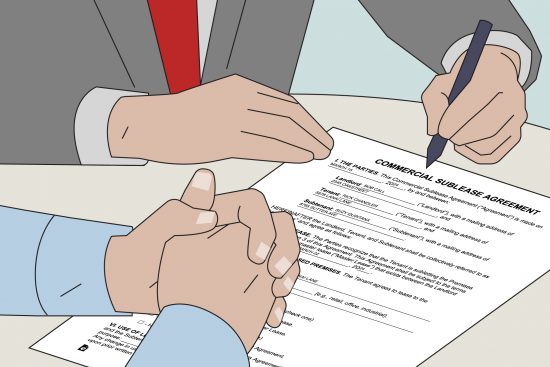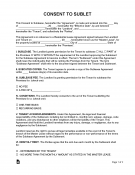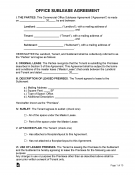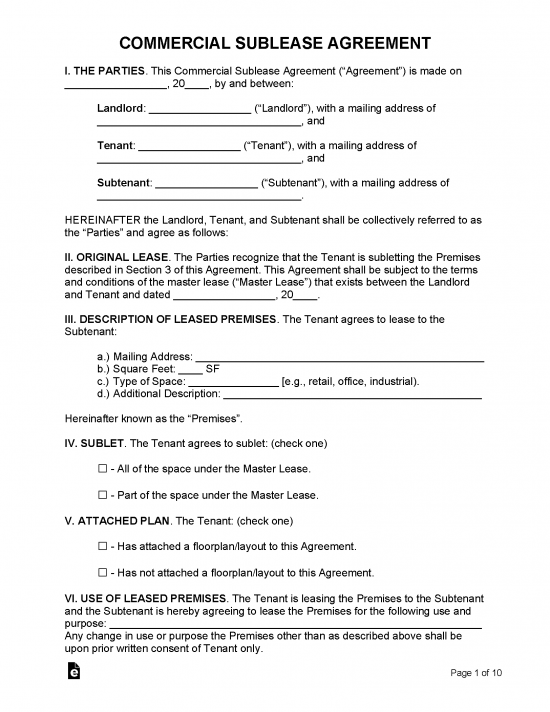A commercial sublease agreement is between a current tenant that is renting property and a subtenant that agrees to rent the same space. The tenant will need to have permission from the landlord if subletting is prohibited in the original (“master”) lease. The subtenant will be required to not only follow the terms of the sublease but also of the master lease.
A tenant can choose to sublet a portion of OR the entire space.
Use this document to get the landlord’s permission to rent the property to a subtenant.
How to Sublet Commercial Space
- Step 1 – Review the Master Lease
- Step 2 – Put the Space for Lease
- Step 3 – Show the Property
- Step 4 – Screen the Subtenant
- Step 5 – Write the Sublease
- Step 6 – Occupancy Begins
Step 1 – Review the Master Lease

Gather the original lease and any addendums signed between the landlord and tenant. The tenant should look specifically for language regarding subletting the property. If subletting is allowed, the tenant can re-rent the property.
If subletting is prohibited, the tenant will need to get permission through the landlord’s consent to sublet.
Step 2 – Put the Space for Lease

Once allowed to sublet, the tenant should place the space for lease with LoopNet, RedFin, Crexi, and any other commercial property directories.
It’s best to upload professional photos, property details, and list the asking rent. For retail and industrial space, the property should be marketed by the price per square foot ($/SF).
Step 3 – Show the Property

Once interest has been made by prospective tenants, times should be scheduled to show the property. When scheduling, be sure to have a commercial rental application to intake their personal and business information.
A non-refundable fee ($) is commonly required when accepting an application for tenancy.
Step 4 – Screen the Subtenant

Use the list of 11 screening websites to figure the best service for screening the tenant. For an advanced search, the tenant will need to spend $50-70 in fees which should be obtained from the subtenant.
Step 5 – Write the Sublease

After the subtenant is approved for tenancy, it’s time to write the sublease agreement. The parties are recommended to first agree verbally or through a letter of intent and convert to an official sublease.
Step 6 – Occupancy Begins

After the parties sign the sublease agreement, the subtenant will need to schedule occupancy in the property. Official move-in may need to be approved by the local government, through a Certificate of Occupancy, and afterward, the subtenant will be able to operate their business in the space.
Office Space
Download: Adobe PDF, MS Word, Rich Text Format


